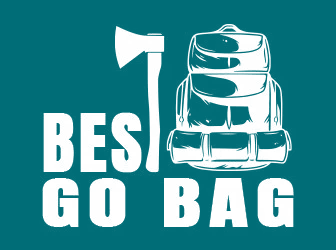<imgsrc=”” alt=””>
Even if you happen to live in a community with a very low risk of flooding, keep in mind that anywhere it rains—it can flood.
Just because you haven’t experienced a flood in the past doesn’t mean you won’t in the future. Flood risk isn’t just based on history—it’s also based on a number of factors, including rainfall, flood-control measures, topography, river-flow, and tidal-surge data, as well as changes due to new construction and development.
Floods are one of the most common hazards found throughout the world. However, all floods are not alike; some develop slowly, sometimes over a period of days, while others can develop quickly, sometimes in just a few minutes and without any visible signs of rain—these fast-paced, life-threatening floods are better known as flash floods.
But what exactly are flash floods, and what is the best way to prepare for them?
We’ll tell you.
Keep reading to learn everything there is to know about these dangerous floods and how you can properly prepare for them.
What Causes Flash Floods?
Flooding occurs in known floodplains when prolonged rainfall over a handful of days, intense rainfall over a few days, or an ice or debris jam causes a stream or river to overflow, flooding the immediate surrounding area. Melting snow can combine with rain in the early spring and winter; severe storms can bring a lot of heavy rain in the summer and spring, or tropical cyclones can bring intense rain to the inland and coastal states in the fall and summer.
Flash floods tend to occur within six hours of a rain event, or after a levee or dam failure, or following a sudden release of water. These disasters can easily catch people off guard. You won’t always have a warning that these deadly, sudden floods are coming, so if you happen to live in areas prone to flash floods— plan now to protect your loved ones.
What Should I Do In A Flash Flood?
Most fatalities caused by a flash flood occur because people either underestimate the power of fast-moving water or they simply are not prepared for an emergency situation. Follow these tips before and during a flash flood to keep your loved ones safe during severe weather.
- Make sure that you have an emergency plan and an emergency kit ready to go. If you are forced to evacuate, you need to know where to go. Learn the roads that are safe to travel during a flood and which roads are likely to collect water. It is good to have an escape plan formed before imminent danger so you and your family can quickly reach safe territory during flood conditions.
Also, be sure to prepare and store an easily accessible emergency kit packed with essentials like first-aid, flashlights, and batteries.
- Stay up to date on weather forecasts. If you have a cellular device, you are likely to receive a Wireless Emergency Alert during flash-flood conditions. It’s still a good idea, though, to be aware of possible severe weather conditions before these alerts are even sent out. The more notice that you and your family have, the better prepared you can be for weather hazards such as flash floods.
- Whatever you do, don’t wait until a warning to take action. As soon as you know one of these deadly floods is likely to occur—take action. Depending on where you’re located, this might mean evacuating to safer territory—just be sure to disconnect all appliances and utilities first. It might also mean getting off the street and finding higher ground.
- Immediately follow your local evacuation orders. You don’t have to wait for the orders to evacuate, but once these orders are given, you should immediately follow them.
- Move to the highest point possible and call for help. If it is too late to evacuate your home, move your loved ones to the attic or highest point possible—and then call 911.
- Do not walk or drive near flooded areas. Over half of the flood-related deaths that occur happen when people drive their cars into floodwater. The next highest percentage of drownings are caused by people who try to walk into or near floodwaters.
It only takes 6 inches of fast-moving water to knock over most individuals and 12 inches of fast-moving water to carry away smaller cars. Never try to drive or walk through a flooded area. Turn around—don’t drown!
Flash Flood Watch Vs. Flood Watch Warning
It’s good to understand the difference between a flash flood warning and a flash flood watch so you can properly prepare.
Flash Flood Watch: Issuing a flash flood watch indicates that the weather conditions are favorable for a possible flash flood, according to the National Weather Service. It does not, however, guarantee that the area under the watch will see a flash flood, but it provides a heads-up for area residents or visitors.
Flash Flood Warning: On the other hand, a flash flood warning can mean that a flash flood is currently occurring or that one of these intense floods is imminent in the area under the advisory.
The moment you are given notice that there is a flash flood watch, you should start preparing by putting together supplies and your emergency kit. Once the flash flood watch has turned into a warning, pack up the family, and get to higher ground immediately.
What if the water doesn’t seem to be that deep?
You might be thinking that you can stick it out at home, seeing the water doesn’t seem to be that deep, but this is a grave mistake.
Flash floods can sweep away cars, knock over trees and telephone poles, as well as provide dangerous electrical conditions. Additionally, the most frightening part of this weather phenomenon is how fast the water is capable of rising. When a flood warning is issued for your immediate area, conditions can change quickly, and an area that may look safe at first glance may not actually stay that way.
Always be sure to use caution when dealing with a flash flood warning.
What areas have the most risk for flash floods?
Areas that are densely populated tend to create a large risk for flash floods in and of themselves. An increase in construction and the presence of paved surfaces like roads, highways, driveways, buildings, and paved surfaces can reduce the amount of surface area that is available to absorb rainwater. Runoff from these many paved surfaces vastly heightens the chances of a flash flood.
Conclusion
So, how should one prepare for a flash flood?
You can prepare for a flash flood by putting together a flash flood emergency plan. Knowing which roads are safe and which roads to avoid can mean life or death when one of these intense floods come through. It is also crucial to put together an emergency kit with all the essentials like flashlights, blankets, and a first aid kit.
Not sure where to get emergency supplies for your kit? Check out Stealth Angel Survival—the leader in emergency preparedness kits, supplies, and survival products. From bug-out-bags to first aid kits and everything in between, Stealth Angel Survival can help you to stay safe and prepare for the worst.
Sources:
https://www.earthnetworks.com/flooding/



